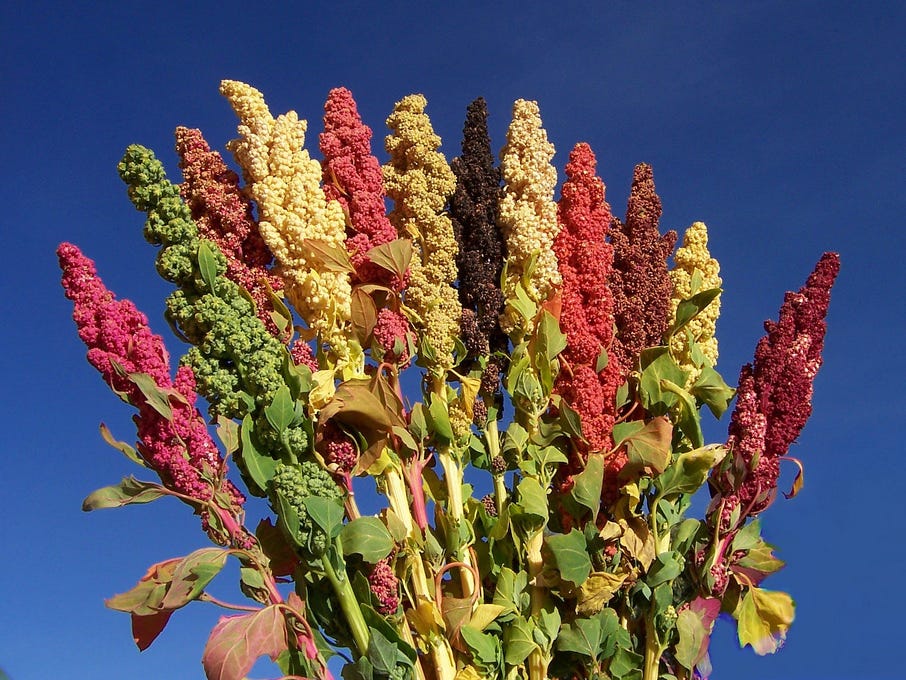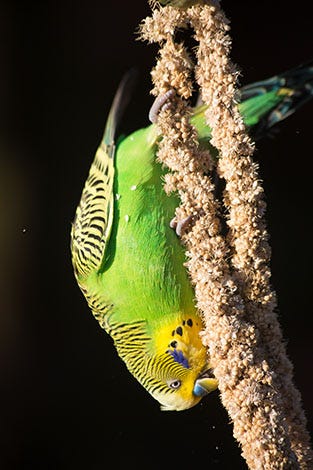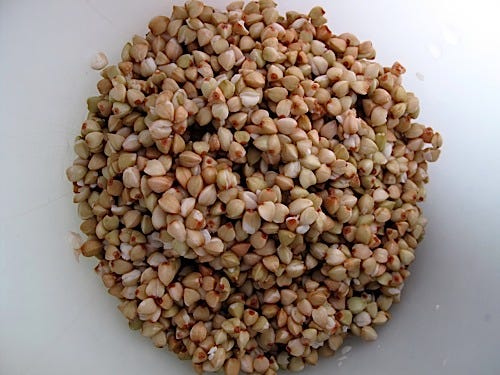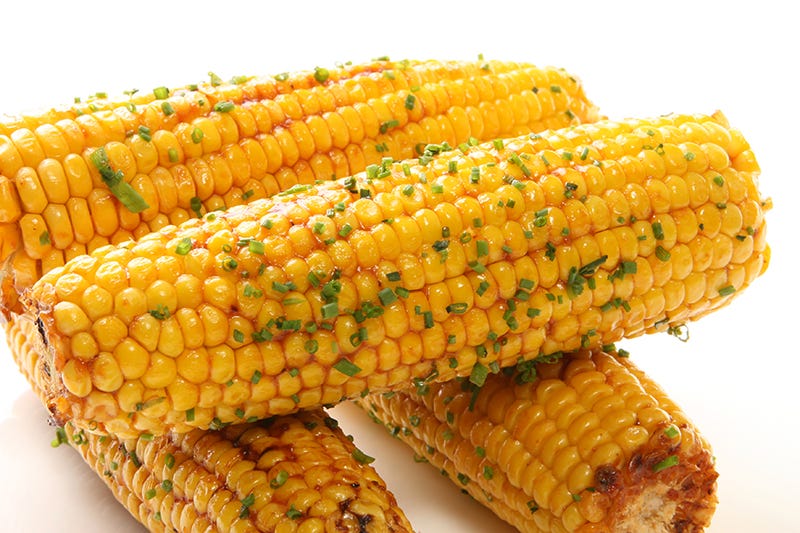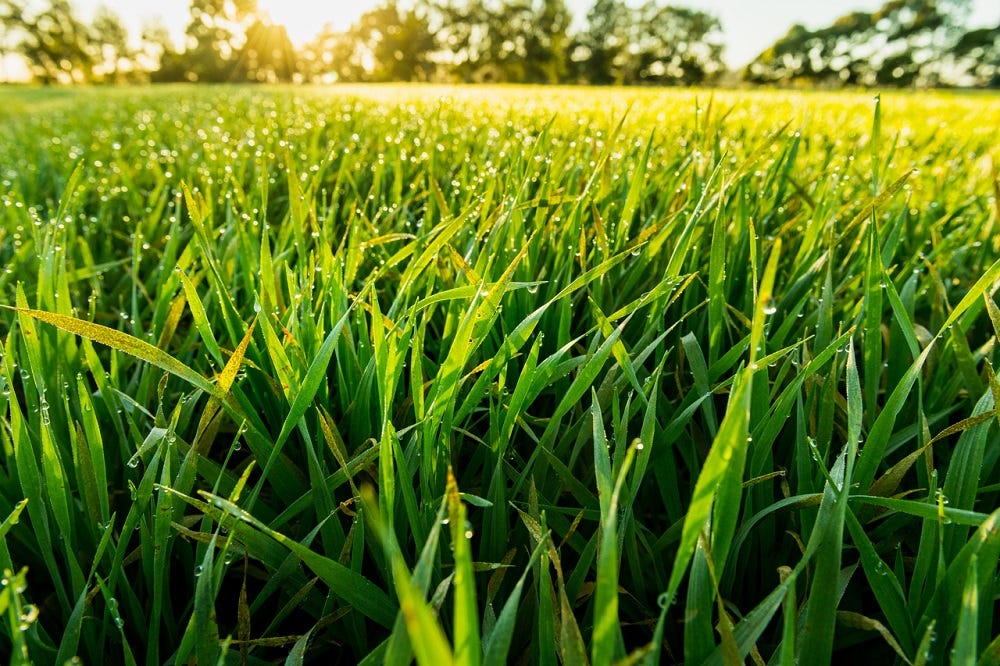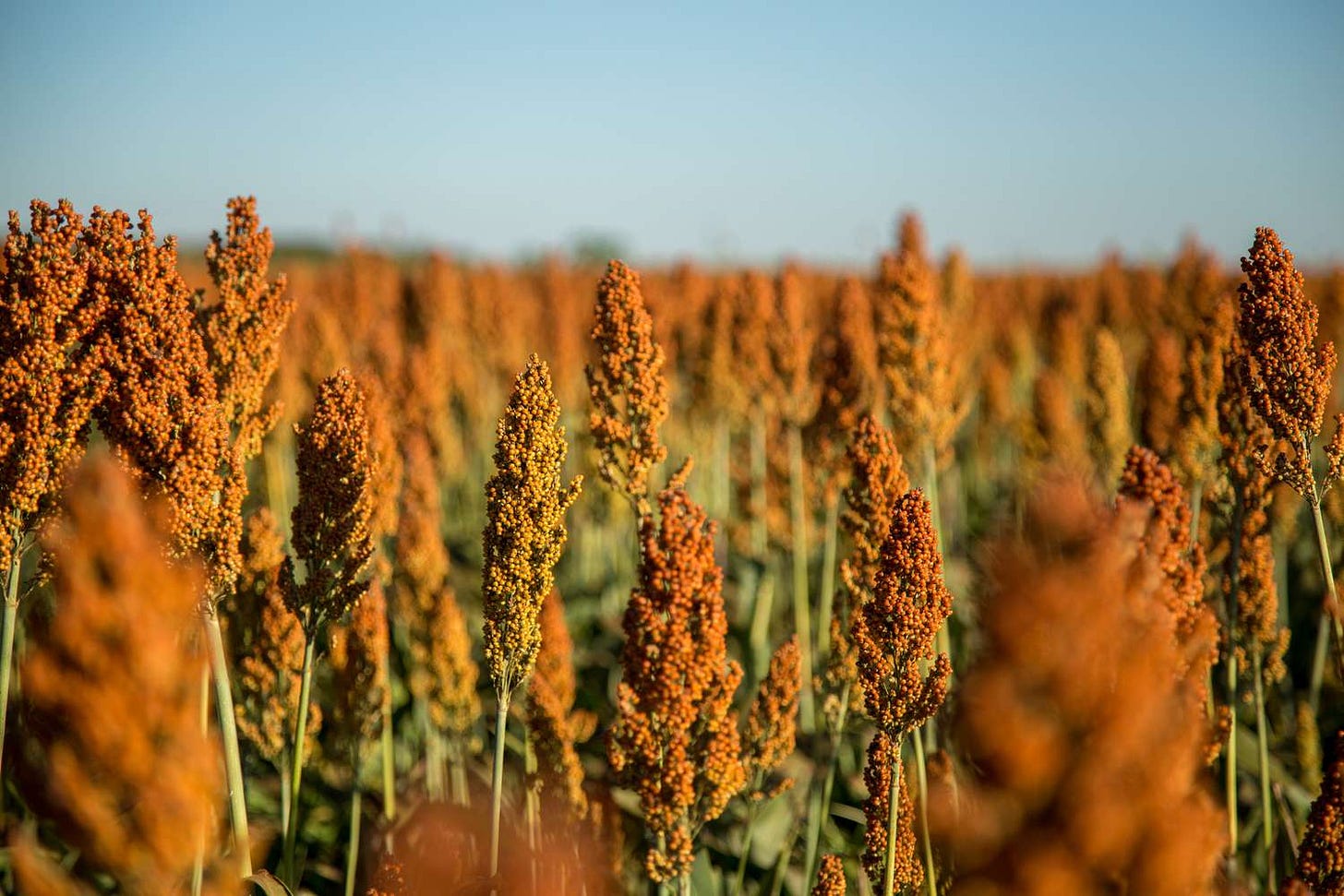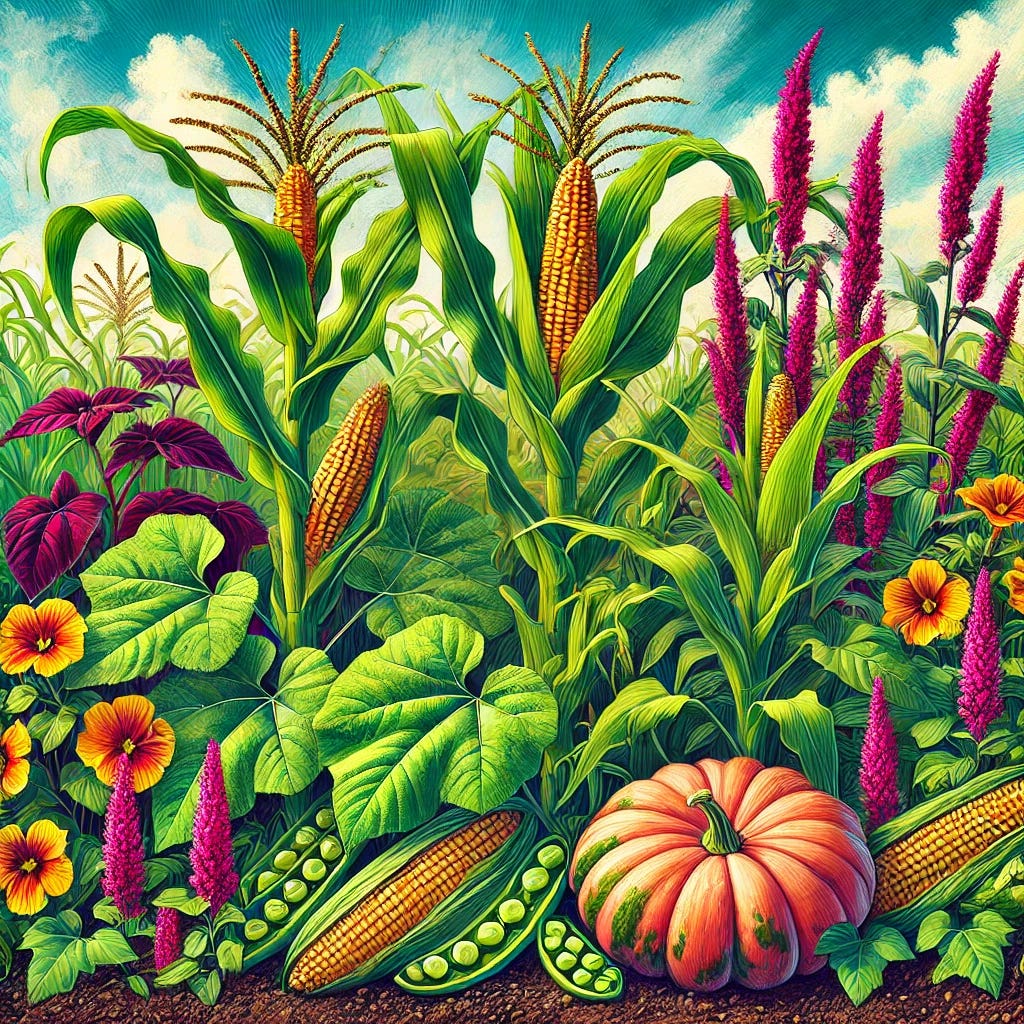(NOT!) Against The Grain. Grain = Seeds
Growing Grains At A More Local Scale
Overview
Currently, we tend to grow grains at a mammoth, monocultured scale (think corn) which is beginning to fail for several reasons; depleting soils being just one. As we have discussed before, in several of these articles, soils are a key, if not the key; resource. In this post, we are proposing a methodology for growing grains locally, close to where we eat them or use them.'
Details Of Grain Plants
Growing edible grains on a small plot, (let’s use 1/3 acre) can be quite productive if planned well. We are assuming here a Temperate Zone, incidentally. Here’s a list of manageable and versatile grain plants that can be grown on this scale, along with a few extra details:
1. Amaranth
- Variety: Grain amaranth varieties such as ‘Golden Giant’ or ‘Hopi Red Dye’
- Growing Season: Warm season, frost-sensitive
- Yields: High yield in small space; seeds are high in protein
- Notes: It tolerates poor soil and drought conditions and also provides edible leaves.
- Leaves: Young leaves are edible and highly nutritious. They can be eaten raw in salads or cooked like spinach, offering a good source of vitamins A, C, and iron.
- Stems: Tender young stems can also be cooked and eaten.
2. Quinoa
- Variety: Many varieties, but high-altitude or cool-climate types like ‘Red Head’ work well in various climates.
- Growing Season: Cool season, but tolerates heat well
- Yields: High in a small space, though yields can vary by variety and climate.
- Notes: Requires minimal water and nutrient input; seeds need to be rinsed to remove saponins.
- Leaves: Young quinoa leaves are edible and can be used in salads or stir-fries. They have a mild flavor similar to spinach.
- Note: The leaves contain oxalates, so it’s best to eat them in moderation, especially for those with kidney issues.
3. Millet
- Variety: Foxtail, Pearl, and Proso millet are common
- Growing Season: Warm season, drought-tolerant
- Yields: High yield in small areas; quick-growing (60-70 days)
- Notes: Great for sandy or poor soil; a reliable staple grain.
- Generally, only the seeds are eaten, as millet does not have particularly edible leaves or stems. However, millet plants can be a useful addition as animal fodder if you have livestock.
Also millet is often used as bird food.
4. Buckwheat
- Variety: Common buckwheat (Fagopyrum esculentum)
- Growing Season: Quick-growing, typically 70-90 days from seed to harvest
- Yields: Moderate, but valuable as a cover crop for weed suppression and soil health
- Notes: Useful in marginal soils; grows well in cooler climates.
This is an interesting article about growing buckwheat for hay.
- Leaves and Shoots: Young leaves and shoots are edible and can be used in salads. However, they contain rutin, so it’s best to consume in moderation.
- Flowers: Buckwheat flowers are attractive to pollinators and can be used to make tea. They also contribute to a healthy ecosystem by attracting beneficial insects.
- Buckwheat seeds can also be sprouted.
5. Corn (Sweet, Flint or Dent Varieties)
Sweet Corn:
When we buy corn from a typical supermarket chain then boil or steam it to eat this is sweet corn. Unfortunately in most cases this will be GMO corn. Much better is to grow our own sweet corn and the seeds are easily available, luckily.
Here is a recipe for buttered sweet corn.
Dent and Flint corn are two of the major types of corn (Zea mays) cultivated for different purposes. They have distinct physical characteristics, uses, and growing preferences. Here's a detailed comparison:
---
A. Physical Appearance
Dent Corn:
- Named for the small "dent" or indentation that forms on the top of each kernel as it dries.
- Kernels are softer, with a mix of hard and soft starches.
- Comes in shades of white, yellow, or even reddish hues.
Flint Corn:
- Named for its hard, "flinty" exterior.
- Kernels are smooth, rounded, and hard due to a high proportion of hard starch.
- Comes in a wide variety of colors, including yellow, red, blue, and multicolored (used in decorative "Indian corn").
---
B. Starch Composition
Dent Corn:
- Contains a mix of hard and soft starches, with more soft starch in the center of the kernel.
- The soft starch allows the kernel to shrink when it dries, creating the dent.
Flint Corn:
- Contains predominantly hard starch throughout the kernel.
- This gives it a harder, more durable texture and makes it resistant to pests and spoilage.
This beautiful Oaxacan Green Corn has seeds available here.
C. Uses
Dent Corn:
- Primarily used for animal feed, industrial products (like ethanol), and as a base for processed foods (e.g., corn syrup, cornstarch, masa for tortillas).
- Also used to make hominy and grits.
Flint Corn:
- Often used for making polenta, hominy, cornmeal, and popcorn (specific varieties).
- Popular as a heritage or decorative crop because of its colorful kernels.
- Less commonly grown on an industrial scale compared to dent corn.
---
D. Growing and Harvesting
Dent Corn:
- Grows best in warm climates and fertile soils, often requiring a long growing season (120+ days).
- Commonly grown in large-scale agriculture, especially in the United States (Midwest).
Flint Corn:
- Hardier and more adaptable to cooler climates and poorer soils.
- Traditionally grown in regions like New England and South America (especially Andean varieties).
- Requires a slightly shorter growing season (80–100 days for some varieties).
---
E. Historical and Cultural Importance
Dent Corn:
- Developed in the United States and became the dominant corn type for industrial and agricultural uses.
Flint Corn:
- One of the oldest types of corn, cultivated by Indigenous peoples in the Americas.
- Often used in traditional dishes like tamales, tortillas, and polenta.
---
F. Taste and Texture
Dent Corn:
- Has a soft, starchy texture when ground or cooked, making it ideal for creamy or smooth preparations like grits or tortillas.
In summary, dent corn is the workhorse of modern agriculture, while flint corn is a versatile, hardy, and often visually striking crop with deep historical roots.
Flint Corn:
- Has a slightly nutty and dense flavor when ground, with a coarse texture, making it ideal for hearty dishes like polenta.
- Young Ears: When young, corn ears can be harvested as "baby corn" and eaten fresh or cooked.
- Corn Silk: The silk has been traditionally used in herbal teas for urinary health.
- Leaves and Husks: Corn husks can be dried and used to make tamales or wraps, and the stalks can sometimes be chewed for a light, sweet flavor (though they are mostly fibrous).
6. Barley
- Variety: Hulless varieties are easier for small-scale growers, such as ‘Purple Prairie’ or ‘Streaker’
- Growing Season: Cool season; suitable for spring or fall planting
- Yields: Moderate to high; short growing season (about 90 days)
- Notes: Tolerates various soils and is useful for malting, animal feed, or direct human consumption.
- Barley Greens: Young barley shoots are used as barley grass, which can be juiced for a nutrient-dense drink high in vitamins A, C, and B-complex.
- Note: Once mature, barley leaves become tough, so they are typically only edible in their juvenile stage.
There is more information on malting barley here.
7. Rye
- Variety: Winter rye (Secale cereale) is common
- Growing Season: Planted in the fall for early summer harvest
- Yields: Moderate, but it’s resilient and ideal for poor soils
- Notes: Known for winter hardiness; also excellent as a cover crop.
- Rye Greens: Young rye shoots are edible as greens and are often used in juice form for a nutrient boost.
- Note: Like barley, mature rye leaves aren’t commonly eaten, but they’re valuable as a cover crop and for soil improvement.
8. Oats
- Variety: Hulless oats like ‘Terra’ or ‘Streaker’
- Growing Season: Cool season; prefers spring planting in most climates
- Yields: Moderate; requires processing to remove husks
- Notes: Good for milder climates; also an excellent soil-improving cover crop.
- Oat Grass: Young oat shoots are nutrient-dense and can be juiced or eaten in small amounts. Oat grass juice is popular for its health benefits, as it’s high in chlorophyll and antioxidants.
- Oat Straw: Dried oat straw can be steeped to make a tea rich in minerals like calcium and magnesium.
Oat seeds can be easily obtained.
9. Sorghum
- Variety: Grain sorghum or broomcorn for grain harvest
- Growing Season: Warm season, drought-tolerant
- Yields: High yield in warm climates
- Notes: Can also be used for syrup production; useful in dry climates.
- Juice from Stalks: Certain types of sorghum, especially sweet sorghum, produce a sugary juice in their stalks that can be pressed and made into sorghum syrup.
- Leaves: While sorghum leaves are generally too fibrous for direct human consumption, they are sometimes used as animal fodder.
10. Spelt
- Variety: Heritage grain, very hardy
- Growing Season: Fall-planted for spring harvest in mild-winter areas
- Yields: Moderate, with a longer season
- Notes: Requires some dehulling; good for marginal soils and high nutrition.
- Spelt Grass: Like wheatgrass, young spelt shoots can be juiced for a nutritious drink.
- Note: Spelt leaves and stalks can also be used as animal feed, though they aren’t typically eaten by humans in mature form.
11. Teff
One important Ethiopian grain is Teff (Eragrostis tef). Teff is a staple grain in Ethiopia and a significant part of the country's cuisine and agriculture.
Characteristics
Size: Teff grains are incredibly small, resembling tiny seeds.
Color: It comes in different colors, including white, brown, and red varieties.
Growth: It is a warm-season crop, thriving in diverse soil types and even in marginal conditions.
Climate: Teff is drought-tolerant, making it an excellent choice for regions with unpredictable rainfall.
Uses
Injera: Teff is most famously used to make injera, a traditional Ethiopian sourdough flatbread that is central to Ethiopian cuisine.
Flour: Ground into flour, teff is used for bread, porridge, and even baked goods like cookies and pancakes.
Gluten-Free: Teff is naturally gluten-free, making it a popular choice for people with gluten intolerance.
Nutritional Benefits
High in iron, calcium, and fiber.
Rich in protein with an excellent amino acid profile.
Low glycemic index, making it suitable for people managing blood sugar levels.
Cultivation on Small Plots
Teff can grow on small-scale plots like 1/3 acre.
It requires minimal inputs, grows quickly (60–90 days), and is easy to harvest because of its small size.
Comparison with Other Grains
Teff is similar to other small grains like millet or quinoa in terms of nutritional density and hardiness but is uniquely adapted to Ethiopian highlands. Its versatility and resilience make it an excellent grain to include in a sustainable garden.
Tips for Maximizing Yields on 1/3 Acre:
- Succession Planting: Stagger planting of shorter-season grains like buckwheat and millet.
- Interplanting: Consider "three sisters" polycultures (corn, beans, and squash) to maximize space and add soil nutrients. Amaranth is added here making Three Sisters into Four Sisters.
- Cover Crops: Plant winter grains like rye or spelt as dual-purpose crops to improve soil and add to grain harvest.
- Rotation: Rotate grains annually or biannually to improve soil health and manage pests.
- Soil Enrichment: Amending soil with compost and considering leguminous cover crops like clover can enhance yields and grain quality over time.
These grains are well-suited for small-scale cultivation and can provide a diverse and nutritious grain supply from a relatively small space. Let me know if you need details on growing or processing any of these grains!
Some of these grains, such as barley, rye, and oats, are also effective as cover crops and can improve soil health through their extensive root systems. Using these plants in rotation can add organic matter to your soil, reduce weeds, and even attract beneficial insects if left to flower.
Growing grains not only yields edible seeds but also provides a variety of nutritious options from leaves to stalks, and they can even benefit your land’s health in the process. Let me know if you’d like ideas on incorporating these parts into your meals!
Thank you as always for reading this as we move toward our formal launch in 2025.




